| Cucumber leaves may turn yellow and dry for several reasons:
|
|
This problem occurs quite often with cucumbers. |
What to do if the leaves on the cucumbers begin to turn yellow and dry out
Natural causes
Sooner or later, cucumber leaves turn yellow for natural reasons; it is impossible to influence them.In some situations, you can prevent and prolong the life of cucumber vines.
- The lower leaves turn yellow and wither during the growth and development of cucumbers. This is a natural phenomenon. The lower leaves take up a lot of nutrients. But as the shoots grow, they no longer have enough food. Due to its deficiency, they turn yellow and gradually die off. To facilitate plant growth, the leaves closest to the ground are removed when there are at least 6-7 leaves on the vine. Next, every 10-14 days the lower leaves are torn off. But, if the growth of the crop slows down and new leaves do not develop, then there is no need to tear off the lower ones. The basic rule is this: if 2-3 leaves have grown, then the lower ones are removed; if not, then they should not be torn off. The cucumber must have enough green mass for photosynthesis and growth. This is especially important in a greenhouse.
- Prolonged cold and rainy weather. The lashes acquire a uniform yellow-green tint. This is most often observed in open ground cucumbers. If the cold weather lasts longer (below 17°C for more than 7-10 days), then the cucumber leaves begin to turn yellow, dry out and fall off. The only thing that can be done in this case is to install a temporary greenhouse and feed the cucumbers. This practically never happens in a greenhouse. When fed, they recover and continue the growing season.
- The vines complete the growing season. The lower leaves around the edges begin to dry out, and the leaf blade itself becomes yellow. The process begins with the lower leaves, but gradually covers all shoots. As soon as the first signs of wilting appear and the yield has decreased, fertilize with organic matter or, at worst, add a double dose of nitrogen and calimag. Then you can extend the growing season and get a second wave of greens harvest.If urgent measures are not taken, the process will become irreversible and no feeding will help - the plants will dry out.
The last two reasons are quite difficult to influence. The main thing here is not to waste time.
Improper care of cucumbers
Improper care of cucumbers ranks first among all problems. The crop is very demanding on agricultural technology, and even minor deviations can lead to problems.
Improper watering
The problem occurs with both insufficient and excessive watering, as well as watering with cold water.
- In case of lack of moisture Yellowing begins on the lower leaves and quickly spreads throughout the plant. Cucumber leaves take on a yellow tint. As moisture deficiency increases, they turn yellowish-green, then greenish-yellow, yellow, and eventually dry out. Already at the first signs of lack of moisture, the leaves droop and lose turgor, becoming soft and rag-like to the touch. To correct the situation, water the cucumbers immediately. In case of severe wilting, watering is carried out in 2-3 doses.
- Excess moisture manifests itself in the appearance of yellow spots on the leaves, which are barely noticeable at first, but then acquire a bright yellow color and gradually merge. Excessive watering, especially in a greenhouse, is almost always accompanied by the appearance of diseases, most often various rots. If greenhouse cucumbers become waterlogged, watering is stopped for 2-5 days (depending on the weather), and the greenhouse is thoroughly ventilated. In open ground, cucumbers are much less likely to suffer from waterlogging, since under natural conditions most of the moisture evaporates. But during daily heavy rains, a film tunnel is made in the cucumber bed, leaving it open at the ends. Watering is stopped.
- Watering with cold water causes difficulty in absorbing moisture from the soil and can lead to the death of sucking roots. In gardening communities, water is usually taken from a well at a depth of several meters. Groundwater is very cold and unsuitable for irrigation. Before watering, it should sit and warm up for several hours. When watering with cold water, it is not consumed by the plant, the cucumbers lack moisture, and the cucumber leaves turn yellow. Of course, this is a temporary phenomenon, but such watering retards the development of cucumbers and leads to the fall of the ovaries and greens. Cold water cools the soil, which is extremely undesirable for cucumbers.
The optimal watering regime for the crop is once every 2-3 days, and daily in hot weather. Water consumption rate - 10 l/m2. In cloudy and cold weather, watering is carried out once every 3-4 days.
Lack of batteries
Cucumbers are consumed extremely lots of nutrients. Their deficiency immediately affects the condition of cucumber leaves.
- Lack of nitrogen. Young leaves are small, light green with a yellowish tint, the rest become light green with a yellowish tint, the tips turn yellow. With a lack of nitrogen, the lower end of the green plant (where the flower was) narrows and bends like a beak. The opposite end thickens. Cucumbers are fed with any nitrogen fertilizer, manure (1 liter of manure infusion per bucket of water) or herbal infusion (1 liter/5 liters of water). For hybrids, the fertilizer consumption rate is doubled.
- If the cucumber leaves not only turn yellow, but begin to curl down and dry out, this is an acute nitrogen deficiency in the soil. This phenomenon occurs especially often on poor soils. At the same time, the greens turn yellow and fall off.To correct the situation, fertilize with nitrogen mineral fertilizers (urea, ammonium nitrate, ammonium sulfate). After 5-8 days, fertilizing is repeated. The first feeding is done on the leaves (foliar), the second time the cucumbers are watered at the root. In case of acute nitrogen deficiency, feeding with organic matter is not recommended, since it enriches the soil, while mineral fertilizers contain elements that are already suitable for plant nutrition and are absorbed very quickly. After eliminating the sharp shortage of nitrogen, they switch to the usual regime of fertilizing with organic matter.
- Potassium deficiency. A brown border appears along the edge of the leaf, and the greens take on a pear-shaped shape. Feeding with potassium sulfate or ash. Cucumbers are potassium lovers and tolerate a lot of this element, so the norms for potassium fertilizing of the crop are high: 3 tbsp. spoons of potassium fertilizer per 10 liters of water. Take 1-1.5 cups of ash per 10 liters. The drug Kalimag is very effective, which also contains magnesium, which is also often lacking in cucumbers.
- Magnesium deficiency. The leaf acquires a marble color: the veins remain green, and between them the leaf blade turns yellow, but the leaves themselves do not droop, curl or dry out. It is necessary to carry out foliar feeding with Kalimag (10-15 g/bucket of water), or pour dolomite flour (1 cup/bucket) under the root.
Insufficient lighting
It is mainly seedlings grown at home that suffer from lack of light. Cucumbers tolerate shading well, but apartments are too dark for them, and if there is no sun on the windowsill for at least 3-4 hours a day, cucumbers turn yellow. With strong shading, seedlings begin to turn yellow already at the cotyledon leaf stage.The leaves acquire a uniform yellow color, and if the room is also dry, their tips dry out and curl a little. The plant itself does not die, but its growth slows down or stops completely.
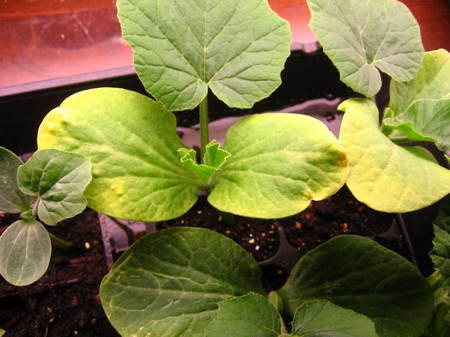
Seedlings should be grown in good light.
If there is insufficient lighting, seedlings are illuminated for 2-4 hours a day if they grow in a north-east or north-west window. If the window sill is poorly lit (north window) or in prolonged cloudy weather when growing seedlings on any windowsill, they are illuminated for 5-8 hours.
In greenhouse conditions, dense plantings suffer from lack of light. The lower cucumber leaves, to which practically no light reaches, turn yellow and fall off. Along with yellowing of leaves, diseases develop in such thickets. Usually, not one, but several diseases appear.
For the normal development of cucumbers, they are thinned out, excess vines are removed, and the lower, diseased and dried leaves are cut off. Properly formed cucumbers in a greenhouse not only do not experience a lack of light, but also need shading.
In open ground, cucumbers do not suffer from lack of light. On the contrary, it is recommended to shade them or even grow them under trees.
Cucumbers loosened
The plants initially look healthy, but the next day the leaves begin to turn yellow. If the roots are not severely damaged, then only the lower leaves turn yellow, but if the damage is significant, then the leaf blades dry out and the crop dies.
If the cucumber leaves have just turned yellow, then water the cucumbers with Kornevin (5 g of the drug per 5 liters of water) as soon as the first signs of yellowing appear and 2 days after the first watering. If the damage is severe, cucumbers cannot be saved.
When growing cucumbers, they are not loosened because their roots are very delicate. At the slightest damage, they die and the plants then take a long time to grow new roots.
If the soil is too dense, then mulch it. As a last resort, the ground is pierced with a pitchfork at a distance of 20-30 cm from the plants. But loosening cucumbers, even superficially, is not recommended.
Growing cucumbers through seedlings
Cucumber seedlings are grown only in peat pots. Under no circumstances should you dive it. Plants are planted in the ground along with the container in which it grows.
If the roots are still damaged, the cucumber leaves turn yellow, but do not curl. Yellowing spreads evenly throughout the entire leaf blade. Plants are watered with a solution of Kornevin or Heteroauxin.
Yellowing of cucumbers caused by pests and diseases
Any cucumber diseases always affect the condition of the plants. Most often, the first signs appear on the leaves, and then damage appears on the greens and vines.
- Downy mildew. Yellow oily spots appear on the leaves on the upper side, which then merge. A white-purple coating of mycelium appears on the underside. The spots begin to dry, the leaf blade turns brown, gradually dries out and begins to crumble. At the first signs of disease, cucumbers are treated with Abiga Peak, Previkur, Consento, or the biological product Trichodermin. The treatment is carried out at least 2 times, changing the drug, otherwise the pathogen will become accustomed to the active substance. Greenhouse cucumbers are especially affected by powdery mildew.
- Angular spot (bacteriosis). Yellow spots appear on the upper side of the leaves, and droplets of cloudy pink liquid appear on the lower side.Gradually, the stains dry out, crack and fall out, leaving behind holes. The leaf dries up. Then the disease spreads to greens. At the first signs of disease, cucumbers are treated with copper preparations: HOM, copper sulfate, Bordeaux mixture.
- Anthracnose. Primarily appears on the leaves. Vague yellow spots form on them, then merge. The leaf blade looks burnt. The edges of the leaves curl slightly upward and crumble. To prevent the development of the disease, treatment is carried out with Alirin B, Fitosporin or copper-containing preparations.
- Cucumber mosaic virus. Pale yellow spots or streaks appear on the leaves. Gradually the veins become yellowish. The leaves become corrugated and gradually die off. The disease spreads quickly and can spread to other crops. Treatment with Farmayod. As the disease progresses, the cucumbers are removed.
- Spider mite damage to cucumbers. The pest causes significant damage to cucumbers. Lives and feeds only on the underside of leaves. It pierces the skin and feeds on plant sap. Light spots appear on the leaves, which then become discolored. There are gradually more and more such points. If the damage is severe, the leaf turns yellow-brown, dries out and falls off. Initially, mites infect the lower leaves, and as they dry out, they move up the vines. A characteristic sign of pest damage is the web with which it entangles the plant. In case of minor damage, treat with biological preparations Bitoxibacillin, Akarin, Fitoverm. In case of severe damage, spray with Apollo and Sunmite acaricides. All treatments are carried out only on the underside of the leaves.
- Melon aphid attack. The pest feeds on any parts of the plant, but gives preference to leaves. Aphids curl cucumber leaves. They turn yellow, wrinkle and dry out. If you unfold the leaf, you can see a colony of insects in it. Damaged lashes dry out and die, the plant begins to shed its ovaries. When in large numbers, aphids can destroy borage. For pest control they use the drugs Aktara, Iskra, Inta-Vir.
The use of proper agricultural technology saves you from many problems with cucumbers. The culture requires painstaking care, but this is the only way to get a good result.
You might be interested in:
- What to do if powdery mildew appears on cucumber leaves
- What are the types of rot on cucumbers and how to treat them?
- Spider mites are not scary at all, you have to be able to fight it
- Why do cucumber leaves wither in a greenhouse?
- Here are all articles about growing cucumbers
- Why does the ovary on cucumbers turn yellow and what to do?
- Why do eggplant leaves turn yellow?
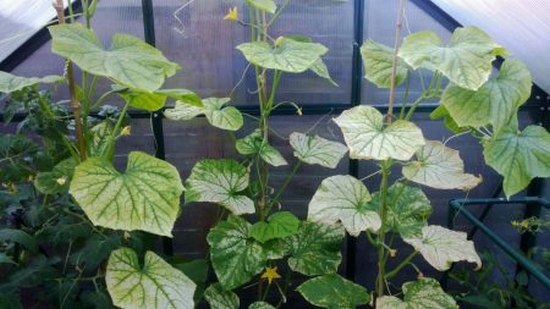

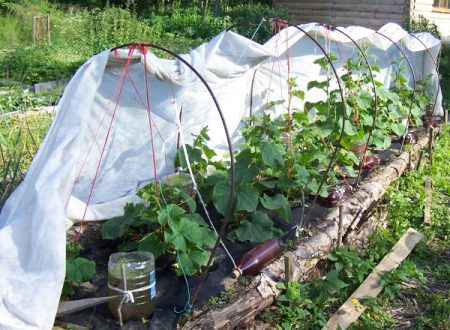
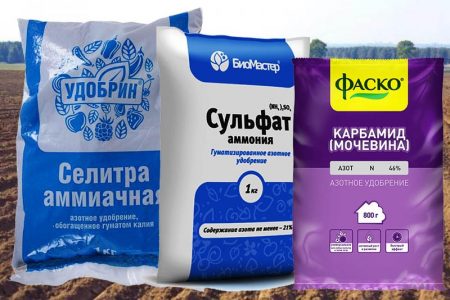
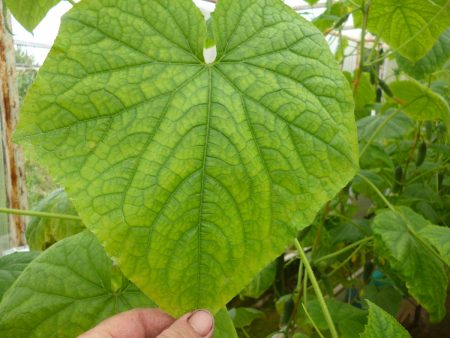
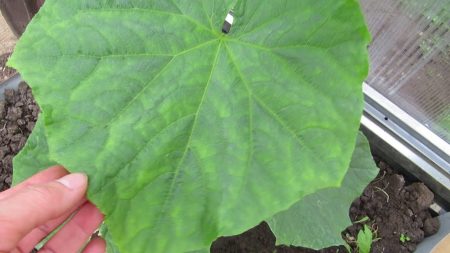
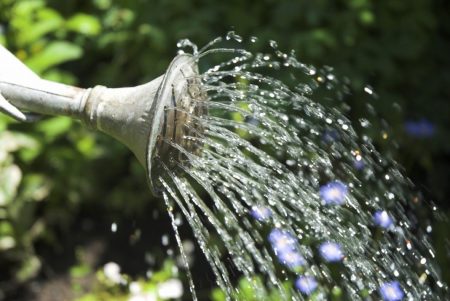
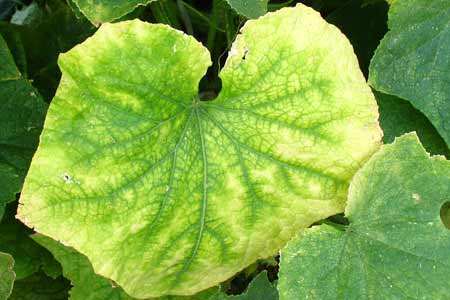
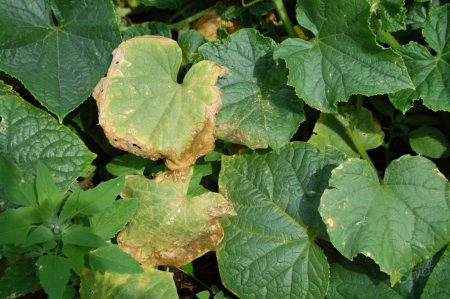
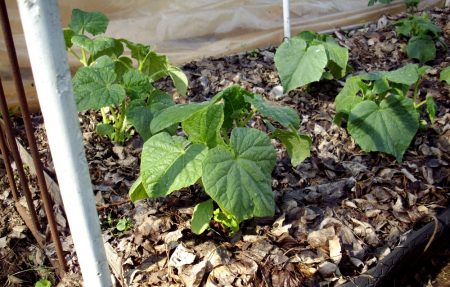
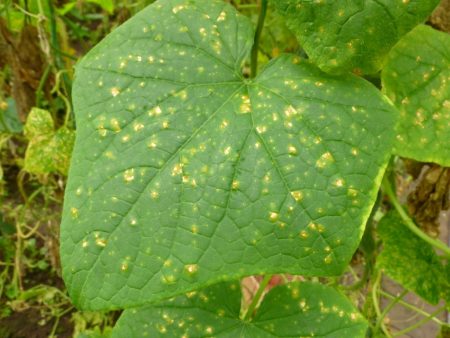
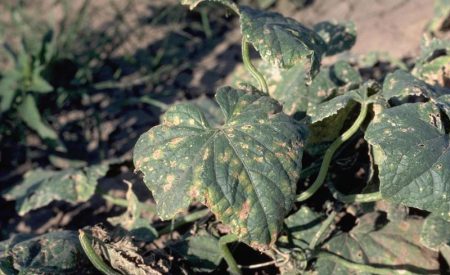
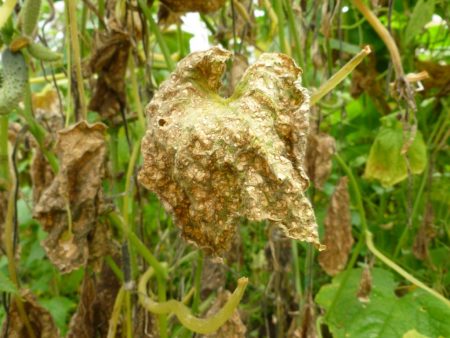
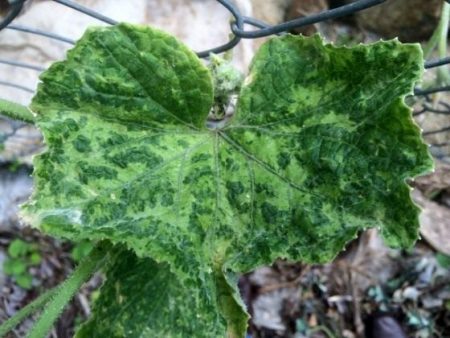
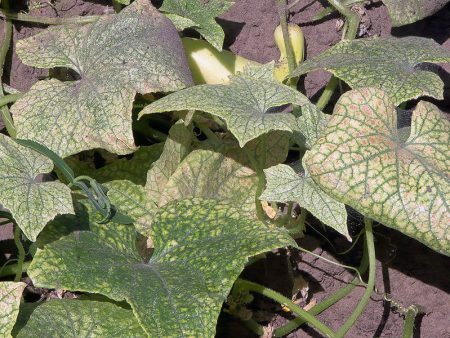
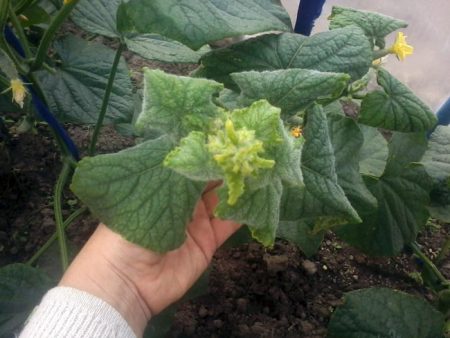

 (8 ratings, average: 4,50 out of 5)
(8 ratings, average: 4,50 out of 5) CUCUMBERS NEVER GET SICK, I'VE BEEN USING ONLY THIS FOR 40 YEARS! I SHARE A SECRET WITH YOU, CUCUMBERS ARE LIKE THE PICTURE!
CUCUMBERS NEVER GET SICK, I'VE BEEN USING ONLY THIS FOR 40 YEARS! I SHARE A SECRET WITH YOU, CUCUMBERS ARE LIKE THE PICTURE! You can dig a bucket of potatoes from each bush. Do you think these are fairy tales? Watch the video
You can dig a bucket of potatoes from each bush. Do you think these are fairy tales? Watch the video
 How our fellow gardeners work in Korea. There is a lot to learn and just fun to watch.
How our fellow gardeners work in Korea. There is a lot to learn and just fun to watch. Eye trainer. The author claims that with daily viewing, vision is restored. They don't charge money for views.
Eye trainer. The author claims that with daily viewing, vision is restored. They don't charge money for views. A 3-ingredient cake recipe in 30 minutes is better than Napoleon. Simple and very tasty.
A 3-ingredient cake recipe in 30 minutes is better than Napoleon. Simple and very tasty. Therapeutic exercises for cervical osteochondrosis. A complete set of exercises.
Therapeutic exercises for cervical osteochondrosis. A complete set of exercises. Which indoor plants match your zodiac sign?
Which indoor plants match your zodiac sign? What about them? Excursion to German dachas.
What about them? Excursion to German dachas.